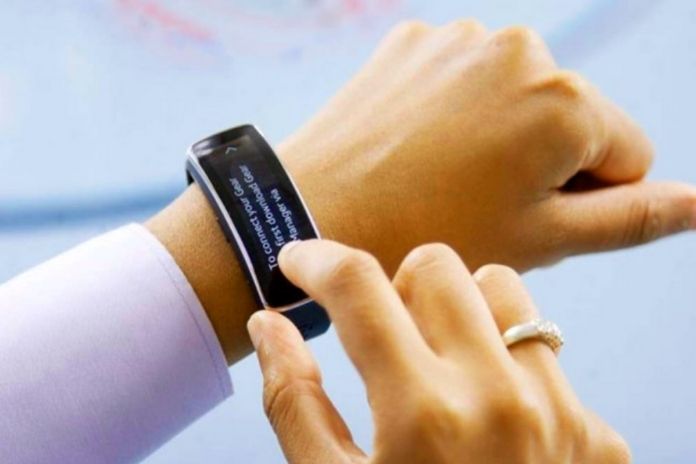
Most smartwatches and fitness trackers are crammed with sensors. The Apple Watch Series 4, for example, has a barometric altimeter to measure altitude, an electric heart sensor to measure EKG, and an accelerometer to track movement.
Furthermore, an optical heart sensor to measure the heart rate, a gyroscope to track movement and rotation, and an ambient light sensor to control the brightness of your screen.
Although the space inside wearables is minimal, new sensors are being added that give us more information about ourselves and the world around us. Apple recently turned things upside down by adding an electric heart sensor to the Series 4, and many more tech brands are expected to follow suit.
Air Quality, Pollution, And Toxic Gases
Over the past four years, there has been an increase in technologies that measure the quality of the air around us, whether it is general pollution and allergens or toxic gases and toxins.
Air sensors and cleaning systems are not new and have already found their way into our intelligent homes with the Netatmo Home Coach devices. But the air we breathe at home only makes up part of our day.
The problem with integrating air sensors into wearables is that collecting the data depends on several different components. Flow, for example, shoots a laser beam from a particulate matter sensor at air particles that enter the device. The light they scatter is converted into an electrical current, then read by a VOC and NOx sensor.
There are other ways to measure air quality, but right now, it’s challenging to pack this type of technology into the small case of a smartwatch.
But that doesn’t mean manufacturers won’t try. As early as 2019, the Apple team discovered a patent for integrating sensors for toxic gases in the Apple Watch and the iPhone. The patent is primarily aimed at detecting carbon monoxide, an odorless gas that can be fatal.
While most Apple patents don’t find their way to a finished product, this one is interesting because it could be used as a continuous monitor in another iteration, as the Flow, but on our wrists.
This could be used to monitor air quality in areas with high levels of air pollution. However, it could also be used in certain professions, such as miners who need to be made aware of toxic gases.
Why Sensors In Wearables?
For most, the first item that comes to mind when one hears the term “wearable” is likely some fitness-associated gadget for the wrist.
The wrist is an ideal place for a tracker like FitBit or an Apple Watch as it is a place where the pulse can be easily located and measured. At the same time, the sensor can measure the movement simultaneously (usually in steps based on specific arm movements).
However, as one moves away from fitness wearables and into the medical wearables arena, the collected information for analysis changes. In general, medical wearables collect different information than fitness trackers.
As the market for different wearables grows, different types of sensors with other functions are being developed. But what kinds of sensors are used in wearables that enable data to be analyzed on both a fitness and medical level?
At the most basic level, all sensors used in a wearable device must be biocompatible. This means that the sensor can safely interact with the body – a natural form – without causing damage or impairment of the state. In addition, the internal sensors vary from device to device due to the various functions that these devices may include.
Some standard sensors used in portable medical devices are temperature thermistors (detects the temperature of the surface of the skin), piezoelectric sensors (used to monitor heart rate), and photo plethysmography (which sees the volume of blood in a specific area of skin).
Compromises In Biometric Wearables And Sensor Modalities
There are always compromises when it comes to biometric wearables and the sensor modalities involved. You can have a device with many different sensors (e.g., PPG, EKG, GSR, and EEG), has a very long battery life, and takes thousands of measurements per second.
However, it is likely to be bulky, inconvenient, and very sensitive to sensor placement and motion artifacts (compounded by the wide variety of sensor types).
It would help if you found the right balance between the various important factors to your use case and customer experience. Typically, the levers to pull and the key questions to ask are:
- Portability And Convenience: How long do people have to wear the device for the study? How long do they have to wear the machine to get the desired result in the real world?
- Measurement Autonomy: Do the measurements the device takes need to be seamless and autonomous in the background while people enjoy their lives, or can the test subject be notified to pause an activity and take a manual measurement?
- Movement Tolerance: Do the test subjects sit still during the measurement, or do they wear the device during their daily activities?
- Measurement Frequency: How often does the device take measurements?
- Data Communication. How often does the device communicate data, and where does it send this data?
- Long-Term Durability: How long is the device expected to last? Electrodes, for example, have not shown long-term durability in wearables.
- Battery Life: Charging or changing the battery has a direct impact on adherence to wearing the device. How long is the battery life long enough for your application?
Medical Wearables Have The Most Significant Impact In Outpatient Medical Use Cases
Medical wearables are particularly relevant for medical devices that function reliably in everyday activities where traditional medical standards cannot work.
The definition of “regular life activities” and the required “measurement accuracy” is based on the intended use (the use case) and the medical claims that are to be raised with the solution. In general, the market has proven so far that it is acceptable to put the portability of the sensor above the measurement accuracy for mobile applications.
We also saw four main modes of biometric surveillance emerge to prove medical wearable uses:
- Outpatient monitoring: The wearable device replaces an unwieldy “medical” device for outpatient use; for example, PPG-based blood pressure monitoring replaces the use of blood pressure cuffs.
- Deputy: Some wearable sensors can be suitable replacements for other “medical” sensors; For example, PPG sensors replace EEG in neuromodulation therapy and pain management.
- Augmentation: They are using a wearable device to complement a pharmacotherapy or digital therapeutic to gain a deeper insight into how the person responds to both acute and chronic therapy.
- Screening: The wearable device continuously looks for a potential medical condition, such as wearables with PPG sensors to screen for irregular heart rhythms and then prompt the person to take an EKG to check for atrial fibrillation or other arrhythmias.
It Always Takes Much More Data Than You Think
Last but not least, there is data collection. No matter how much data you think you need now, expect it to be at least double or triple. With the increasing importance of data science and machine learning techniques for the use of wearable sensor data, the need for more data in almost every use case we’ve seen has grown significantly.
In addition, there are limits to deep learning to address acute use cases. The collected data must be correctly classified and compared with reference data from a reference device.
While millions of labeled EKG data can be obtained from dozens of universities and hospitals worldwide, PPG and auscultation data cannot. These labeled data sets do not exist sufficiently for practical deep learning approaches and must be created with massive data collection efforts.
In summary, we are still at an early stage for developing new medical use cases with biometric wearables. Still, I hope these tips will help navigate this maze and prove that these groundbreaking ideas will work in the future.
Also Read: Biometrics And Tokenization





